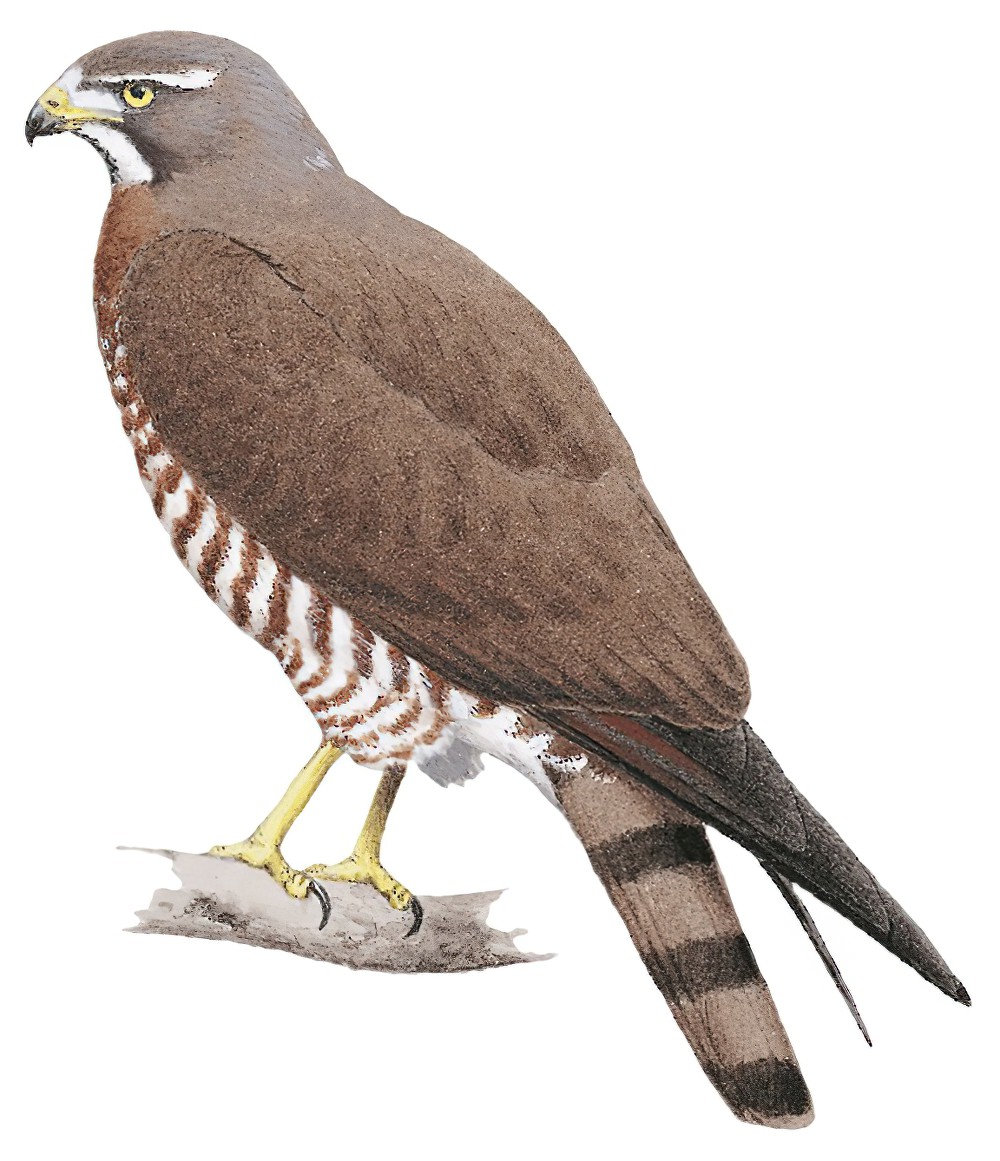Gray-faced Buzzard / Butastur indicus

Gray-faced Buzzard
SCI Name:
Protonym: Falco indicus Syst.Nat. 1 pt1 p.264
Taxonomy: Accipitriformes / Accipitridae / Butastur
Taxonomy Code: gyfbuz1
Type Locality: Java.
Author: Gmelin, JF
Publish Year: 1788
IUCN Status: Least Concern
DEFINITIONS
BUTASTUR
(Accipitridae; Ϯ White-eyed Buzzard B. teesa) Portmanteau of genera Buteo de Lacépède, 1799, buzzard, and Astur de Lacépède, 1801, goshawk; “18. Buteoninæ. Genus Butastur, Hodgson. Buteo teesa, Auct., type. [Circus teesa, Franklin; Astur Hyder, Sykes.] It differs from the true Buzzards in its less corpulent form, and general adaptation for more active habits: the tarsi are longer and more prominently scutellated in front, the toes also being scutellated above nearly to their base, and the talons are comparatively powerful. The markings also are somewhat peculiar, and recal to mind those of various South American Raptores; but still manifest a relationship to the true Buzzards, which is further conspicuously shewn by the rufous tail.” (Hodgson 1843); "Butastur Hodgson, 1843, Jour. Asiat. Soc. Bengal 12: 311. Type, by original designation, Circus teesa Franklin." (Ripley, 1961, Synopsis Birds India Pakistan, p. 49).
Synon. Bupernis, Percnopsis, Poliornis, Valeria.
indicus
L. Indicus Indian < India India. In early ornithology the term Indiis was also applied to the East Indies and, less frequently, to the West Indies and the Guianas.
● India and Tibet; ex “Barred-headed Goose” of Latham 1787 (Anser).
● Erroneous TL. India (= South Carolina) (syn. Baeolophus bicolor).
● Java; ex “Javan Hawk” of Latham 1781 (Butastur).
● ex “Indian Goatsucker” of Latham 1787 (Caprimulgus).
● ex “Drongolon” of Levaillant 1805, pl. 174, and “Long-tailed Shrike” of Latham 1822 (syn. Dicrurus macrocercus).
● ex "Psittaca indica coccinea” of Brisson, “Perruche des Indes orientales” of d’Aubenton 1765-1781, pl. 143, “Lori Perruche violet et rouge” of de Buffon 1770-1783, and “Indian Lory” of Latham 1781 (syn. Eos histrio).
● ex “Lohaujung Heron” of Latham 1787 (syn. Ephippiorhynchus asiaticus).
● ex “Eastern black Cuckow” of Lastham 1787 (syn. Eudynamys scolopaceus).
● ex “Grand Vautour des Indes” of Sonnerat 1782 (Gyps).
● ex “Indian Curucui” of Latham 1787 (?syn. Harpactes fasciatus).
● ex “Merle des Indes orientales” of d’Aubenton 1765-1781, pl. 273, fig. 2 (syn. Lalage nigra).
● ex “Smallest red and green Indian Paroquet” of Edwards 1743-1751, “Psittacula indica” of Brisson 1760, and “Red and green indian Parrot” of Latham 1781 (syn. Loriculus beryllinus).
● ex “Indian Jacana” of Latham 1787 (Metopidius).
● ex “Little Hawk Owl of Ceylon” of Pennant 1769, and “Indian Eared Owl” of Latham 1781 (syn. Otus bakkamoena).
● ex “Gélinote des Indes” of Sonnerat 1776, and “Indian Grous” of Latham 1783 (Pterocles).
● ex “White-chinned Bustard” of Latham 1783, and “Passarage Bustard” of Latham 1787 (Sypheotides).
● ex “Rossignol de muraille des Indes” of Sonnerat 1782 (Tarsiger).
● ex “Bécassine blanche des Indes” of Sonnerat 1776, and “White indian Snipe” of Latham 1785 (?Tringa erythropus).
● Erroneous TL. India (= Gamtoos River, Cape Province, South Africa); ex “Indian Coly” of Latham 1787 (Urocolius).
● ex “Vanneau armé des Indes” of de Buffon 1770-1785 (Vanellus).
● ex “Little redwinged Parrakeet” of Edwards 1758-1764, and “Psittaca indica” of Brisson 1760 (unident.).
● India; ex “Sicrin” of Levaillant 1801, pl. 82 (artefact).
UPPERCASE: current genus
Uppercase first letter: generic synonym
● and ● See: generic homonyms
lowercase: species and subspecies
●: early names, variants, mispellings
‡: extinct
†: type species
Gr.: ancient Greek
L.: Latin
<: derived from
syn: synonym of
/: separates historical and modern geographic names
ex: based on
TL: type locality
OD: original diagnosis (genus) or original description (species)












